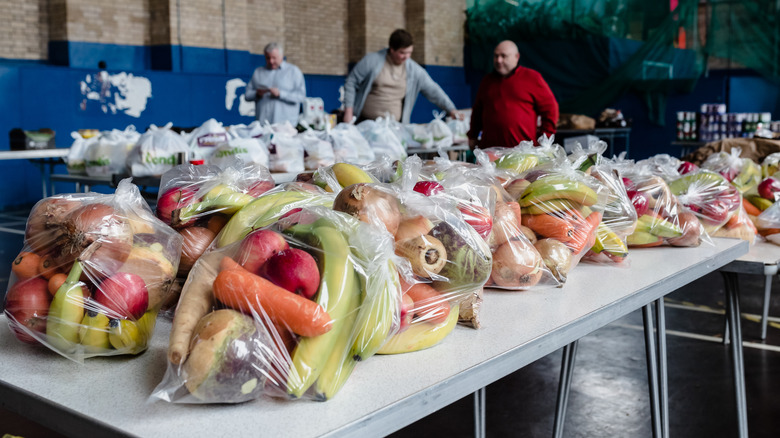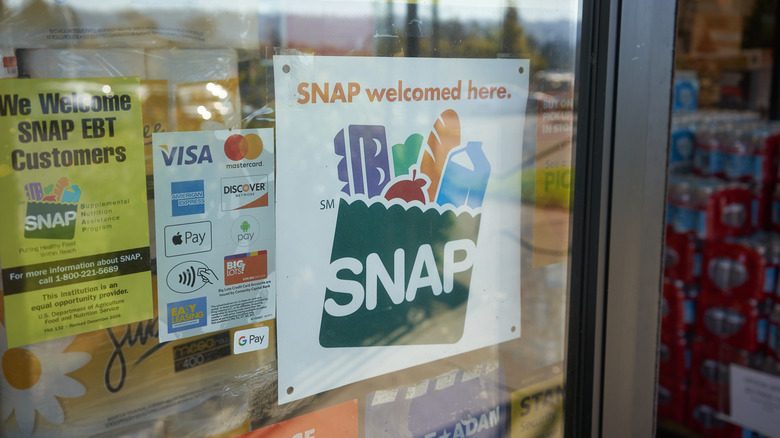US Food Banks Face Skyrocketing Demand After Food Stamp Cuts
It looks like America's current recession has reached the marker of being dismal to the point of irony — even the food banks are hungry. Two years ago, a mass expansion of federally-funded food aid programs saved millions of Americans from hunger during the COVID-19 pandemic. But now, that expansion has reached its expiration date against the backdrop of an entirely new nationwide disaster of inflation.
According to the U.S. Bureau of Labor Statistics, food-at-home prices are up 8.5% from last year. As a result, over 41 million consumers relied on the Supplemental Nutrition Assistance Program (SNAP) in 2022. That's roughly 12% of the country's population, making SNAP the county's biggest federal food aid program. When the expansion ended, SNAP recipients' benefits suddenly and dramatically decreased by an average of $82 per person in March alone. On top of the SNAP expansion coming to an end, recent legislation has further limited access to government-aided food security programs like food stamps, per Reuters.
Republican House Speaker Kevin McCarthy proposed a bill that would impose more rigorous work requirements on eligible recipients for the SNAP, raising the mandatory-job-training age bracket from 50 to 56. Why? McCarthy justifies defunding food stamps as a means of rebuilding the federal budget — but food banks nationwide are already facing the reality of this decision on U.S. households.
A state of emergency in the making
Food banks across the country are seeing a traffic spike of 46% to 125% from spring 2022, with the number of regular visitors now exceeding peak-pandemic figures, reports Reuters. Last month, a study published by the Urban Institute showed that nearly 25% of U.S. consumers identify as food insecure (a 5% increase from just one year prior), making the issue a national epidemic. To cope with food inflation, 62% of consumers have cut corners on their grocery lists and omitted items, 36.3% went into credit card debt to buy groceries, and 43.3% had to take money out of their savings accounts.
Looking forward, while the future of food stamp accessibility remains uncertain, it looks like other federal programs might step in to give food banks a helping hand. The USDA has announced plans to give food banks nationwide $1 billion in aid by the end of September 2023. Still, September is a long way off, and millions of U.S. households are facing food insecurity now. An estimated 11.4 million U.S. consumers got their groceries from a food bank during April alone, and food bank operating costs are currently up 25% to 30% from just one year ago.

